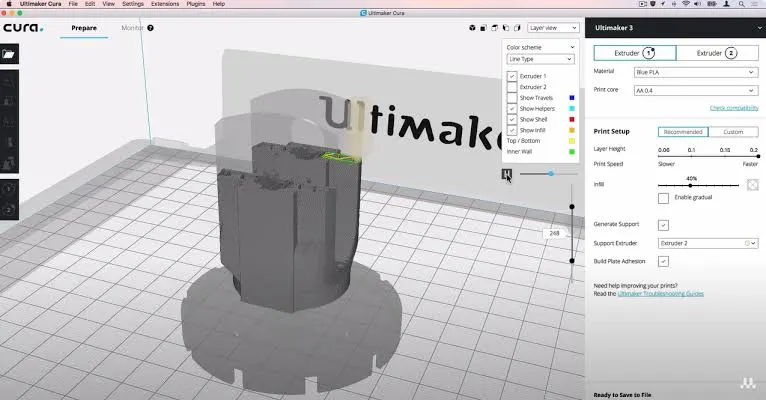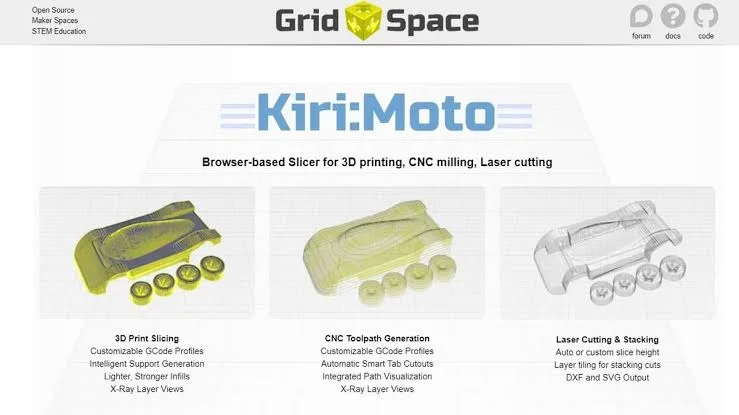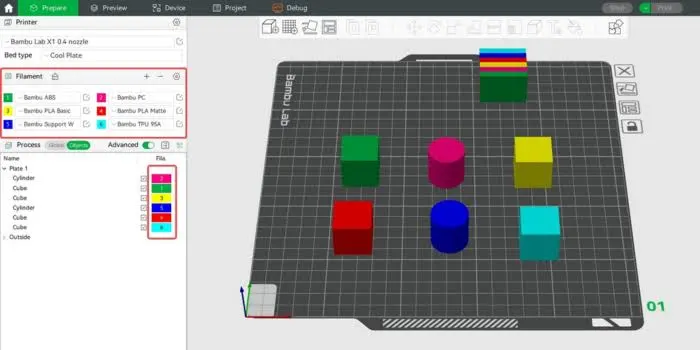Orca Slicer has become a standout slicer in the 3D printing space, especially among Bambu Labs enthusiasts. However, depending on your printer model, experience level, or the kind of projects you take on, you might feel the need for a different approach. Whether you’re hunting for better user interfaces, deeper customization, or optimized compatibility, there are powerful alternatives ready to enhance your workflow.
Best 10 Orca Slicer Alternatives:
Below, we’ve listed 10 excellent Orca Slicer alternatives, each tailored to different users and needs.
1. Cura – Trusted and Open-Source for All Levels:
Cura, developed by Ultimaker, is often considered the go-to slicer for beginners but has features robust enough for professionals. With regular updates, a user-friendly interface, and wide printer support, it remains a top pick in 2025.

Why Choose Cura:
- Open-source and widely supported
- Friendly UI with optional expert mode
- Huge library of pre-configured printer profiles
- Active plugin and community support
Cura is ideal if you’re looking for a reliable, no-fuss slicer that works out of the box while still letting you fine-tune settings.
2. PrusaSlicer – Precision for the Power User:
PrusaSlicer is known for its deep customization options and excellent support for multi-material printing. It’s built for those who love control and optimization.
Standout Features:
- Powerful retraction and seam control
- Multi-material painting and modifier meshes
- Seamless G-code scripting for advanced users
- Vibrant community and frequent updates
Whether you’re using a Prusa machine or not, this slicer brings professional-level settings to any print job.
3. Simplify3D – Premium Experience, Professional Output:
If you’re willing to invest, Simplify3D offers perhaps the most detailed control over every aspect of slicing and support generation.
Why It Stands Out:
- Blazing-fast slicing
- Variable settings across model regions
- Custom scripts for professional workflows
- Intuitive preview and repair tools
Simplify3D is ideal for production environments, client jobs, and anyone who values speed + precision without open-source fiddling.
4. SuperSlicer – The Tinkerer’s Playground:
SuperSlicer caters to advanced hobbyists who enjoy pushing the boundaries of what’s possible. It’s based on PrusaSlicer but includes experimental features and extra tuning tools.
What Makes It Unique:
- Advanced filament tuning (flow, drying settings)
- Strong support for multi-extruder setups
- In-depth temperature and speed control per layer
- Regular updates from passionate developers
This slicer is a perfect sandbox for those who enjoy dialing in every aspect of their prints.
5. Kiri – Slice Anywhere with a Browser-Based Tool:
Kiri:Moto provides a lightweight, browser-based slicing option, perfect for slicing models on the fly without bulky installations.

Why Kiri Works:
- Cloud-based access from any OS or device
- Easy-to-use interface with real-time preview
- Supports CNC, laser, and 3D printing workflows
- No installations or updates required
It’s the ideal slicer for students, mobile workstations, and anyone who prioritizes accessibility.
6. MatterControl – Design and Slice in One:
MatterControl is more than a slicer, it’s a full 3D printing hub with built-in modeling, printer control, and remote management tools.
Key Benefits:
- Design models directly in the software
- Manage multiple printers or print queues
- Monitor jobs live and tweak in real time
- Cross-platform support for Windows, macOS, and Linux
If you prefer a unified environment for everything from design to print execution, this is your tool.
7. Slic3r – The Foundation That Still Holds Strong:
Though it’s older, Slic3r remains a dependable, lightweight, and script-friendly slicer that still has relevance in 2025.
Why It’s Still Popular:
- Reliable performance on low-spec systems
- Open-source and easy to modify
- Strong command-line interface for automation
- Community-driven updates for niche use cases
It’s great for Linux users, embedded systems, or anyone who wants pure slicing power with minimal UI.
8. Repetier-Host – Control Multiple Printers with Ease:
Repetier-Host is a multi-printer management tool bundled with strong slicing capabilities. It integrates well with various slicers and printing hardware.
Why Professionals Use It:
- Manage several printers at once
- Choose your slicing engine (CuraEngine, Slic3r, etc.)
- Supports real-time monitoring and webcam feeds
- Ideal for print farms or labs
If you’re managing volume and need a slicer that can keep up with operational demands, Repetier-Host fits the bill.
9. Anycubic Slicer – Purpose-Built for Specific Hardware:
Anycubic Slicer simplifies the slicing process for Anycubic users, with profiles that remove guesswork and improve reliability.
Tailored Features:
- Optimized for Photon and i3 Mega series
- Quick setup with pre-tuned profiles
- Good for both resin and FDM models
- Regular updates tied to hardware improvements
It’s perfect for Anycubic owners who want plug-and-play reliability with room to grow into more detailed settings.
10. Bambu Slicer – Optimized for Multi-Material Bambu Printing:
A refined fork of Orca Slicer, Bambu Slicer is designed specifically for Bambu Labs‘ ecosystem. It offers support for multi-material, multi-color prints with automation baked in.

Why It Excels:
- Tight integration with AMS and X1C/P1P printers
- Live print monitoring via mobile app
- Auto-calibration support for speed and flow
- Beautiful UI tailored for the hardware
If you’re in the Bambu ecosystem, Bambu Slicer removes all friction, leaving you with just beautiful prints.
Conclusion:
Choosing the right slicer depends on more than just features, it’s about how it fits into your personal workflow. Whether you prioritize customization, speed, hardware compatibility, or simplicity, this list of 10 Orca Slicer alternatives offers something. There’s no one size fits all. Try a few, see what feels right, and most importantly, enjoy the process of printing smarter.
Frequently Asked Questions:
Yes, Cura’s user-friendly layout and preset profiles make it easier for new users, while still allowing advanced customization.
PrusaSlicer, SuperSlicer, and Bambu Slicer offer some of the best tools for multi-material support and purge optimization.
While technically possible, Bambu Slicer is optimized for Bambu Labs printers and may not perform as well with other brands.
Slic3r and Kiri: Moto (browser-based) are great for older systems or low-resource environments.
MatterControl includes a parametric modeling interface along with slicing, making it an all-in-one platform.